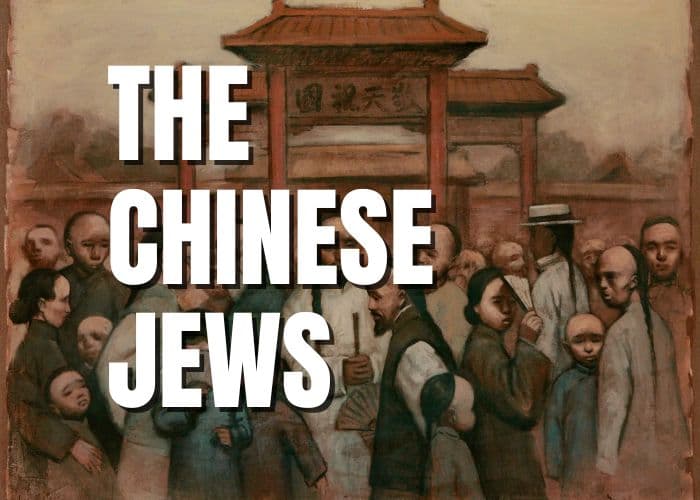The Jewish community in China has a long and fascinating history, with roots dating back over a thousand years. Despite being a small minority in a predominantly non-Jewish country, Chinese Jews have managed to maintain their traditions and culture through the centuries. In this article, we will explore the history, culture, and notable accomplishments of Chinese Jews.
- History
The earliest records of Jewish presence in China date back to the Tang Dynasty (618-907), when Jewish merchants from Persia and India began traveling to China for trade. These early Jewish settlers, known as the “Kaifeng Jews,” established a synagogue in the city of Kaifeng and intermarried with the local Chinese population.
Over time, the Kaifeng Jewish community grew and flourished, with its own unique traditions and practices. However, the community began to decline during the Qing Dynasty (1644-1912), as the government restricted their religious and social activities. By the early 20th century, the Kaifeng Jewish community had all but disappeared.
In the 20th century, a new wave of Jewish immigration to China began with the arrival of European Jews fleeing Nazi persecution. These Jews settled in Shanghai, which became a safe haven for Jewish refugees during World War II. After the war, many of these Jews emigrated to Israel, the United States, and other countries.
Today, the Jewish community in China is small but vibrant, with synagogues and Jewish organizations in major cities such as Shanghai, Beijing, and Hong Kong.
- Communities Today
The Jewish community in China is estimated to be between 2,000 and 3,000 people, with most living in Shanghai, Beijing, and Hong Kong. The community is diverse, with Jews from a variety of backgrounds and nationalities.
Despite its small size, the Jewish community in China is active and engaged. There are synagogues in major cities, such as the Ohel Leah Synagogue in Hong Kong, which was founded in 1902 and is one of the oldest synagogues in Asia. In addition, there are Jewish community centers, schools, and organizations that provide support and resources for the community.
- Culture
The culture of Chinese Jews is a blend of Jewish and Chinese traditions, with unique customs and practices that reflect their history and experiences. One notable aspect of Chinese Jewish culture is the cuisine, which combines Jewish and Chinese culinary traditions. For example, some Chinese Jews celebrate Passover with a traditional Seder meal that includes Chinese dishes such as egg rolls and dumplings.
Music is also an important part of Chinese Jewish culture. The Shanghai Jewish Refugees Museum hosts regular concerts featuring Jewish and Chinese musicians performing together, showcasing the unique musical traditions of both cultures.
- Religious Liturgy
Chinese Jews have their own distinct religious practices and liturgy, which has evolved over centuries of interaction with the local Chinese culture. The Kaifeng Jews, for example, developed a unique prayer book that incorporated Chinese characters and was written in Hebrew, Chinese, and Judeo-Persian.
Today, the Jewish community in China practices a variety of Jewish traditions and customs, including Orthodox, Conservative, and Reform Judaism. In addition, there are also Chinese Jews who practice Judaism independently, without affiliation to any particular branch or denomination.
- Notable People and Accomplishments
One of the most famous Chinese Jews is Sir Victor Sassoon, a British-Jewish businessman who made a fortune in the early 20th century through his investments in Shanghai’s real estate and banking industries. Sassoon was a philanthropist who supported Jewish and Chinese causes, and his legacy continues to this day through the Sir Victor Sassoon (Bahamas) Charity Trust.
Another notable Chinese Jew is Eileen Chang, a celebrated Chinese-American author who was born to a Chinese mother and a Jewish father. Chang is considered one of the most important modern Chinese writers, known for her novels and short stories that portray life in China during the turbulent years of the 20th century. Her unique background as a Chinese Jew has also attracted attention and interest from scholars and readers alike.
In recent years, there has been a growing interest in Chinese Jewish culture, particularly among the younger generation. Many Chinese Jews are actively involved in promoting their heritage and preserving their traditions. Organizations such as the Shanghai Jewish Center and the Kaifeng Jewish Cultural Research Center have been established to promote the study and preservation of Chinese Jewish history and culture.
The cuisine of Chinese Jews is also a unique blend of Chinese and Jewish culinary traditions. Popular dishes include jiaozi, a type of dumpling that is typically eaten during Chinese New Year celebrations, and latkes, a Jewish potato pancake that is often eaten during Hanukkah. Chinese Jews also have their own version of gefilte fish, a traditional Jewish dish made from ground fish.
In terms of religious liturgy, Chinese Jews have their own distinct prayer book, known as the Tefilat Beit Haknesset. This prayer book is unique in that it incorporates elements of both Chinese and Jewish tradition, and includes prayers for the Chinese emperor as well as prayers for the Jewish holidays.
Overall, the history and culture of Chinese Jews is a fascinating and complex topic that has only recently begun to receive more attention and recognition. As more and more Chinese Jews become interested in exploring and preserving their heritage, it is likely that we will continue to learn more about this unique and fascinating community in the years to come.








Ohr HaChaim Yomi – Emor